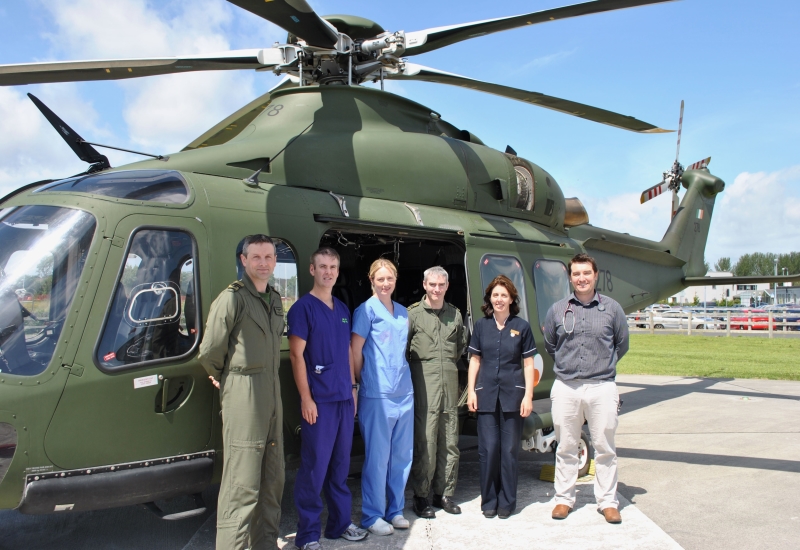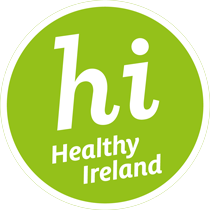You are here
Galway University Hospitals is leading the way in Coronary Care Procedure

Since 1st October last year, Galway University Hospitals (GUH) has been leading the way in providing an emergency 24-hour heart-attack treatment programme, formally known as primary percutaneous coronary intervention or PPCI. This non-surgical procedure is the gold standard treatment for a full-blown heart attack and is used to treat the narrowed or blocked coronary arteries found in heart disease. Recent international evidence has shown PPCI to be the most effective treatment of a major heart attack.
PPCI has been rolled out nationally since January this year as part of the HSE’s National Acute Coronary Syndrome Programme. The National Clinical Lead for the Programme is Professor Kieran Daly, Consultant Cardiologist at Galway University Hospitals, and GUH has led the way as the first hospital to go live in October 2012, providing a 7 day week 24 hour service. The Cardiology Intervention team at Galway comprises a number of Consultant Cardiologists, Medical staff, Cardiac Technicians, Cardiology Nurses and Radiographers, and is supported by other healthcare professionals. For every case 24 hours a day, there is a Consultant Cardiologist, Cardiology Registrar, Cardiology Nurse, Cardiac Technician and Radiographer made available.
Galway University Hospitals was one of six hospitals designated as a Primary PCI centre based on having a catheter laboratory available along with the required number of cardiologists that are trained in PPCI. GUH is now receiving patients from all over the west of Ireland, with many being transported by the Air Corps Medevac 112 helicopter as part of the Emergency Aeromedical Service.
Under the 24/7 service, any patient with an acute heart attack within 90 minutes of travel time to Galway is brought straight to the hospital where they receive emergency treatment in the Cardiac Catheter lab. This involves a minimally invasive procedure under local anesthetic to open blocked arteries using a balloon catheter and stents to stop heart attacks. If outside this travel time, the patient is taken to the nearest hospital emergency department for thrombolysis or clot-breaking drugs and then urgently transferred to GUH.
The National Ambulance Service has been pivotal in the success of this programme. Through their assessment of a patient, including evaluation of the heart tracing or ECG, they determine the appropriate treatment strategy. The “heart attack team” in GUH is activated, and the patient is transferred directly for the emergency procedure.
Dr. Briain MacNeill, Consultant Interventional Cardiologist, GUH says; “When a full-blown heart attack, known as a STEMI, is identified there are two options for treating the patient. If the ambulance service can get to GUH within 90 minutes of travel time, then the patient will be brought directly to the hospital for the PPCI procedure. The ambulance service may also call on the Emergency Aeromedical Service if the flight time including pick-up is within the 90 minute travel time. The National Ambulance Service has direct access to the Cardiology Team on call and can update the hospital on patient condition on route and expected arrival time.”
Over the past year, Galway University Hospitals has treated patients not only from Mayo, Galway and Roscommon but also from Sligo, Leitrim, Donegal, Limerick, Tipperary, Offaly, Longford and Westmeath, as well as people on holidays from US, Canada and France. The helicopter service has been involved in transferring over 50 heart attack patients in the past six months.
The aim of the Acute Coronary Syndrome Programme is to improve and standardise the care of patients that experience heart attacks. As part of the Programme, ambulances are equipped and paramedics trained to recognise a major heart attack and to transport the patients to the best place for appropriate care. GUH has proven to be a convenient and accessible site for the Aeromedical Service as the landing pad is based on the hospital grounds. This means that the emergency crew can transport a patient into the hospital for treatment much more quickly than in some of the other centres where the landing pad is not on the hospital grounds. Early audit has shown excellent outcomes from this new “heart attack” programme.
Photo Caption:
Irish Air Corps personnel with staff from Galway University Hospitals from left: Captain Niall Buckley; Kevin Malone, Staff Nurse, Cardiac Catheterisation Lab; Dr Roisin Colleran, Specialist Registrar in Cardiology; Captain Jake MacCarthy; Rosemary Walsh, Clinical Nurse Manager, Coronary Care Unit; and Dr Stephen Tuohy, Specialist Registrar in Cardiology with the Air Corps Medevac 112 helicopter at the helipad at University Hospital Galway.

